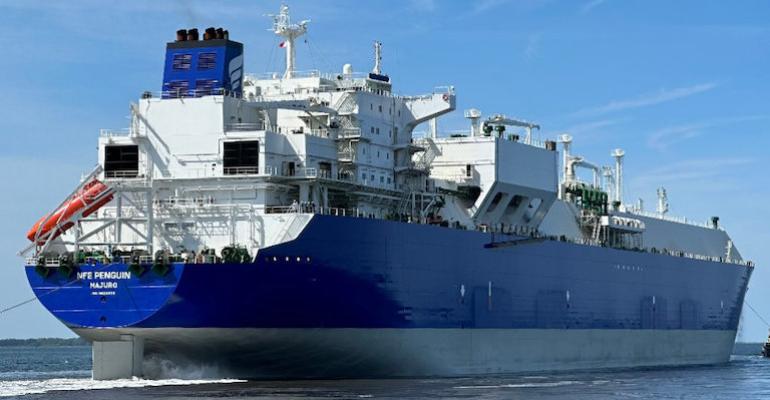New Fortress Energy (Nasdaq: NFE), a developer of energy infrastructure projects with an emphasis on shipments of natural gas, announced that “US Customs and Border Protection (US CBP) has issued a ruling confirming that the transportation of LNG produced at the Company’s FLNG facility located offshore Altamira, Mexico by non-US qualified vessels would not violate the Jones Act.”
NFE explains further that: “As a result of this ruling, NFE is now able to sell and deliver LNG produced at its FLNG facility located offshore Altamira, Mexico to US locations, including Puerto Rico.”
NFE operates an LNG terminal in San Juan, Puerto Rico. NFE’s Altamira facility, when completed, will have the capacity to export 2.8 million tons per annum (TPA). NFE also holds a 20% stake in Energos Infrastructure an owner of LNG tankers, FSUs, and FSRUs - (with these fleets acquired from the now dissolved Golar LNG Partners, and from Dynagas. The Energos Infrastructure fleet is deployed to service NFE projects, on the landside. Its 160,000 cu metre Penguin FSU is onsite at Altamira.
The US CBP ruling is important on multiple levels. A recent legal kerfuffle is on the minds of those who follow the Jones Act’s sometimes highly nuanced logistics. The case involves American Seafoods, a fish producer, which shipped fish from Alaska through the Panama Canal on non-Jones Act compliant vessels, around into New Brunswick, Canada, followed by a short ride (100 feet in each direction) on a rail spur, before sending the fish into Maine (US) by truck.
When the CBP learned about these shipments, and the transhipment on the Canadian “rail link”, the agency called them, in 2021 filings, “a calculated and secret scheme” to evade the Jones Act. The Jones Act requires intra-US shipments, with Alaska and Maine both being US states, to be handled by vessels built, owned and registered in the US - with US crews. The matter was settled in mid 2023, with the offender paying a fine.
So, six months later, the logistics of transhipping US origin gas molecules are top-of-mind to those who are following the Jones Act. The NFE facility in Altamira takes in gas originating in Texas, in the continental US, and sent down to Mexico, via the Valley Crossing Pipeline, LLC connecting to the Sur de_Texas-Tuxpan line in Mexico. Puerto Rico (a US territory), the potential destination for the gas - liquified, and then stored on Energos Inrastructure’s Penguin FSU - has had chronic problems with its electricity generating utilities.
Puerto Rico, with a terminal near Ponce owned by a group of utilities and a smaller NFE facility at San Juan, has been able to import LNG, mainly from Trinidad. Gas originating in the US mainland does not move to Puerto Rico except for small shipments moving in containers from Florida. The US mainland produces considerable gas for export in LNG tankers but there are no Jones Act compliant LNG tankers, hence the need to bring gas into Puerto Rico on internationally flagged tonnage - from Trinidad and elsewhere.
President Joe Biden’s recently announced “pause” on building LNG export facilities in the States will impact future approvals of LNG terminals - but not those already approved or actually in operation.
For investors in NFE, the recent CBP decision is a big positive. Explaining certain Washington, D.C. regulatory impediments to exporting US sourced LNG, analyst Chris Robertson, from Deutsche Bank, wrote: “This is an important development for the Company as it has become increasingly unlikely that the Company will secure a non-FTA permit from the Department of Energy for the asset. We have maintained that the Company either needed the non-FTA permit or the ability to deliver volumes into Puerto Rico in order to optimise its downstream portfolio and secure margins. As such, this is a significant and positive development for the company.” Robertson anticipates NFE’s Altamira coming online at the end of Q1 2024.
Copyright © 2024. All rights reserved. Seatrade, a trading name of Informa Markets (UK) Limited.
Add Seatrade Maritime News to your Google News feed.  |

